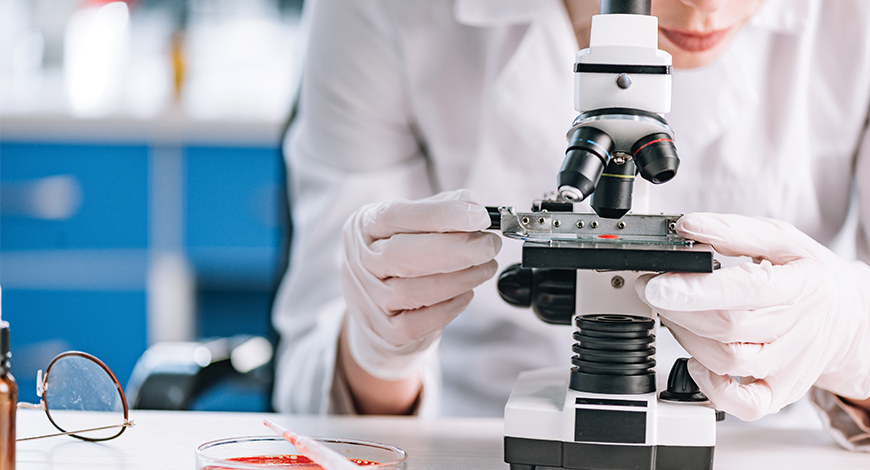Immunochemistry Instruments and Reagents
Immunoassay technology continues to evolve

Immunoassay technology remains an important and rapidly evolving field that holds great potential for the future of disease diagnosis, monitoring, and treatment. Continued R&D in this area is likely to lead to even more sensitive, specific, and accurate assays.
Till recent times, immunochemistry was an integral part of biochemistry. Gradually, the number of tests started rising, and hence the segregation.
Immunochemistry instruments have evolved with time. Initially, we used RIA for thyroid tests. Then, came the era of ELISA manual method – which required training on use of ELISA, pipetting precision, plotting graphs, and reading results, but was very cumbersome.
Then came immunofluorescence technology, which required special microscopes, training on preparing the assay and interpreting, and was cumbersome and prone to errors.
Immunoassay was the next improvement, wherein semi-automated and automated equipment incorporated the reagents for various immunochemistry assays. The menu expanded and so did the research for various tests and equipment. There are several companies now making instruments for immunochemistry.
Immunoprecipitation is another technique used for immunochemistry analytes.
Radioimmunoassay (RIA) application has expanded research in essential areas, including endocrinology, cellular biology, and pharmacology, leading to significant improvements in research outcomes.
The market growth for radioimmunoassay is being fueled by a rising concern for healthcare and the need to diagnose various infections in the human body.
Additionally, the market is benefiting from the establishment of stringent rules and regulations aimed at safeguarding people’s health. Growing awareness of various applications of radioimmunoassay, and increasing demand for point-of-care testing (POCT), are also contributing to the market’s expansion. However, the market growth is being hindered by a shortage of skilled personnel to monitor the systems, and the high costs associated with installing and maintaining the devices.
Enzyme-linked immunosorbent assay (ELISA) is a well-established and widely utilized immunoassay technique that has recently experienced advancements in its sensitivity and specificity.
As a result, there are numerous opportunities available to increase market growth. Immunoassay-based diagnostics are increasingly being applied in diverse fields, leading to a significant rise in demand globally.
The Sandwich ELISA has gained significant traction in the detection of immunological responses, thereby bolstering the market growth. Notably, sandwich ELISA obviates the need for sample purification before analysis, saving time for many manufacturers.
In addition, the launch of novel immunoassays with high specificity and sensitivity across a broad spectrum of biological samples, coupled with a rise in cancer incidence, is expected to boost the adoption of immunoassays.
A notable advancement in the field of ELISA is the recent introduction of the first ELISA kit designed to detect and quantify residual host cell proteins (HCPs) in CHO-based biotherapeutics. Immunosensor for rapid and sensitive detection of digoxin. This study introduces a novel method for detecting the content of digoxin through a photoinduced electron transfer mechanism with the aid of an immune reaction. Furthermore, the approach does not require sophisticated instrumentation, making it a promising tool for routine monitoring of digoxin levels in the patient’s blood and facilitating clinical decision-making for treatment planning.
Fluoroimmunoassay (FIA). In recent years, significant breakthroughs have occurred, enabling the implementation of a fluorescent-based immunoassay system at the point of care.
In recent times, there have been numerous technical improvements that have facilitated the establishment of a highly sensitive immunoassay system. These advancements comprise the availability of low-cost light sources that emit at narrow wavelengths, the introduction of newer and more stable fluorophores that possess wide Stokes shifts, the integration of stable solid-state light detectors, and the application of microprocessors for analyzing and processing data from each test.
Chemiluminescence immunoassay (CLIA) is a highly sensitive and specific analytical technique used for the determination of sample concentrations, based on the intensity of light emitted by a chemical and biological reaction. Compared to ELISA, CLIA offers rapid results but is relatively expensive. The market for CLIA analyzers is experiencing growth due to various factors, such as the increasing prevalence of chronic and acute diseases, advancements in technology related to CLIA analysers, and improvements in the specificity of these analyzers.
Multiplex assays are taking immunoassays to the next level. For many years, ELISA has been the most commonly employed immunoassay technique. However, its use is complicated when multiple analytes need to be detected simultaneously, particularly at ultralow concentrations. This type of detection is currently necessary for precise and prompt clinical evaluation of complex diseases, or biological processes that involve numerous biomarkers, which need to be detected from dilute, peripheral biofluids.
In current times, automated assays, capable of simultaneous detection and quantification of multiple analytes at ultralow concentrations, are readily available, which has led to the advancement of immunoassay techniques.
POCT-based approaches are progressively evolving toward enhanced portability and intelligence, especially when coupled with smartphones.
Microfluidic chip technology has emerged as a disruptive breakthrough in the biomedical field, owing to its advantages, such as minimal reagent consumption, rapid reaction times, high sensitivity, and low costs.
The outbreak of Covid-19 has brought to light the pressing need for the development of precise, economical, and widely available POCT. In this context, a universal lateral flow assay (LFA) platform technology, utilizing M13 phage conjugated with antibodies and HRP enzymes, provides exceptional analytical sensitivity and excellent performance in a complex clinical matrix.
Immunoassay technology remains an important and rapidly evolving field that holds great potential for the future of disease diagnosis, monitoring, and treatment. Continued R&D in this area is likely to lead to even more sensitive, specific, and accurate assays that could further improve patient outcomes and enhance the overall quality of healthcare.














